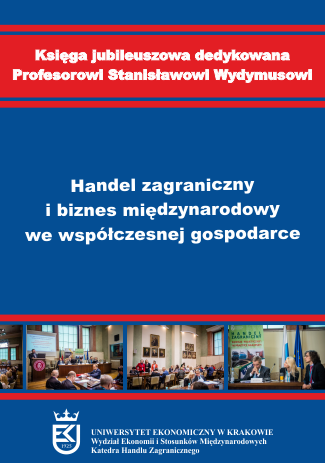Ewolucja uppsalskiego modelu internacjonalizacji przedsiębiorstwa: w kierunku nielinearności procesu umiędzynarodowienia

Abstract
Celem artykułu jest syntetyczne omówienie procesu transformacji uppsalskiego modelu internacjonalizacji przedsiębiorstwa od pierwotnego modelu z 1977 aż po najpełniejszy uppsalski model globalizacji z 2014 roku. Artykuł omawia łącznie 6 modeli zaproponowanych przez Johanssona i Vahlne (z lat 1977, 2009, 2010, 2011, 2013, 2014) pokazując drogę ich transformacji i ewolucji, a model z 2014 roku zawiera już uwarunkowania innowacyjności i branż wysokich technologii high-tech. Artykuł bazuje na przeglądzie literatury – źródłach pierwotnych prezentujących koncepcje autorów modeli uppsalskich.
Keywords
model uppsalski, internacjonalizacja przedsiębiorstwa, modele etapowe
References
- Drew, N., & Sarasvathy, S.D. (2002). What Effectuation is Not: Further Development of an Alternative to Rational Choice. Academy of Management Conference, Denver http://www.effectuation.org/sites/default/files/noteffn.doc (dostęp: 22.09.2017).
- Johanson, J., & Vahlne, J.-E. (2009). The Uppsala internationalization process model revisited: From liability of foreignness to liability of outsidership. Journal of Interna-tional Business Studies, 40, 1411-1431.
- Johanson, J., & Vahlne, J.-E. (1977). The internationalization process of the firm: A mod-el of knowledge development and increasing foreign market commitments. Journal of International Business Studies, 8(1), 23-32.
- Johanson, J., & Vahlne, J.-E. (1990). The mechanism of internationalisation. Internation-al Marketing Review, 7(4), 11-24.
- Johanson, J., & Vahlne, J.-E. (2006). Commitment and opportunity development in the internationalization process: A note on the Uppsala internationalization process model. Management International Review, 46(2), 1-14.
- Johanson, J., & Wiedersheim-Paul, F. (1975). The internationalization of the firm: Four Swedish cases. Journal of Management Studies, 12(3), 305-322.
- Sarasvathy, S.D. (2001). Causation and Effectuation: Towards a Theoretical Shift from Economic Inevitability to Entrepreneurial Contingency. Academy of Management Review, 26(1), 243-263.
- Schweizer, R., Vahlne, J.-E., & Johanson, J. (2010). Internationalization as an Entrepre-neurial Process. Journal of International Entrepreneurship, 8(4), pp. 343-370.
- Solberg, C.A. (1997). A Framework for Analysis Strategy Development in Globalizing Markets. Journal of International Marketing, 5(1), 9-30.
- Stonehouse, G., Hamill, J., Campbell, D., & Purdie, T. (2004). Global and Transnational Business: Strategy and Management, 2nd ed., Chichester: John Wiley and Sons Ltd.
- Vahlne, J.-E., & Ivarsson, I. (2014). The globalization of Swedish MNEs: Empirical evi-dence and theoretical explanations. Journal of International Business Studies, 45(3), 227-247.
- Vahlne, J.-E., & Johanson, J. (2012). New Technology, new environments and new inter-nationalization process? In: V. Havila, M. Forsgren & H. Håkansson (eds), Critical perspectives on internationalisation (pp. 209-228). London: Pergamon.
- Vahlne, J.-E., & Johanson, J. (2013). The Uppsala model on evolution of the multination-al business enterprise: From internationalization to coordination of networks. Inter-national Marketing Review, 30(3), 189-208.
- Vahlne, J.-E., Ivarsson, I., & Johanson, J. (2011). The tortuous road to globalization for Volvo’s heavy truck business: extending the scope of the Uppsala Model. Interna-tional Business Review, 20(1), 1-14.
- Vahlne, J.-E., Schweizer, R., & Johanson, J. (2012). Overcoming the liability of outsid-ership – the challenge of HQ of the global firm. Journal of International Manage-ment, 18(3), 224-232.
- Wickham, P.A. (2006). Strategic Entrepreneurship. 4th edition. Harlow: Prentice Hall.
